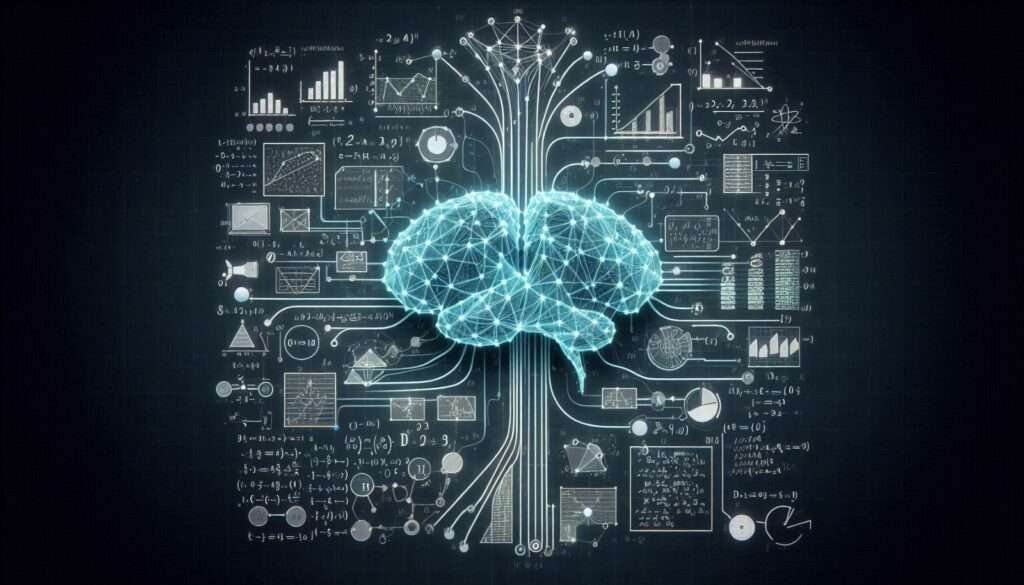Introduction
Machine learning (ML) and statistics are two closely intertwined fields that often collaborate to
solve complex problems in various domains. While machine learning focuses on developing
algorithms that can learn from and make predictions on data, statistics provides the mathematical
foundation for these algorithms, ensuring they are robust, reliable, and interpretable.
The Role of Statistics in Machine Learning
Statistics plays a critical role in many aspects of machine learning, from data preprocessing and
exploratory data analysis (EDA) to model selection and evaluation.
1. Data Preprocessing:
Before feeding data into machine learning models, it must be cleaned
and transformed. Statistical methods help identify outliers, handle missing values, and normalize
data distributions to improve model performance.
2. Exploratory Data Analysis (EDA):
EDA is a crucial step in understanding the underlying
structure of the data. Statistical tools like histograms, box plots, and correlation matrices allow
data scientists to visualize data distributions, relationships, and trends, guiding feature selection
and engineering.
3. Model Selection and Evaluation:
Choosing the right model and evaluating its performance is
a critical aspect of machine learning. Statistical techniques, such as cross-validation, hypothesis
testing, and confidence intervals, provide rigorous methods for comparing model performance
and ensuring generalizability to new data.
Statistical Foundations of Machine Learning Algorithms
Many machine learning algorithms are based on statistical principles. Understanding these
principles can help practitioners choose appropriate models and interpret their results.
1. Linear Regression:
One of the simplest and most widely used statistical methods, linear
regression models the relationship between a dependent variable and one or more independent
variables. It serves as the foundation for more complex models like logistic regression and
generalized linear models.
2. **Bayesian Inference**:
Bayesian methods use probability distributions to represent
uncertainty in model parameters. This approach provides a natural way to incorporate prior
knowledge and update beliefs based on new data. Bayesian inference underlies algorithms such
as Naive Bayes classifiers and Bayesian networks.
3. **Decision Trees and Random Forests**:
Decision trees partition data based on feature
values to create a tree-like model of decisions. Random forests, an ensemble method, combine
multiple decision trees to improve accuracy and reduce overfitting. Statistical concepts like
entropy and Gini impurity are used to determine the best splits in decision trees.
4. **Support Vector Machines (SVM)**:
SVMs aim to find the optimal hyperplane that
separates data points of different classes. The mathematical foundation of SVMs involves
concepts from linear algebra, optimization, and probability theory.
5. **Neural Networks**:
Neural networks, particularly deep learning models, have gained
popularity for their ability to learn complex patterns from large datasets. While they are often
viewed as black boxes, statistical techniques like regularization and dropout help prevent
overfitting and improve model interpretability.
Challenges and Future Directions
Despite the powerful synergy between machine learning and statistics, several challenges
remain. One major issue is the interpretability of complex models, particularly deep learning
networks. Efforts are underway to develop methods for explaining these models, such as SHAP
(SHapley Additive exPlanations) values and LIME (Local Interpretable Model-agnostic
Explanations).
Another challenge is ensuring the robustness of machine learning models in real-world
applications. Statistical methods for detecting and mitigating bias, as well as techniques for
handling imbalanced data, are critical for developing fair and reliable models.
Conclusion
Machine learning and statistics form a symbiotic relationship that drives advancements in data
science. By leveraging statistical principles, machine learning practitioners can develop more
accurate, interpretable, and robust models. As both fields continue to evolve, their collaboration
will undoubtedly lead to new breakthroughs and applications across various domains.
This article provides an overview of the crucial interplay between machine learning and
statistics, highlighting how statistical methods underpin many machine learning algorithms and
processes. Understanding this relationship is key to developing effective and reliable data-driven
solutions.
Written By Muhammad Zeeshan Islam, CEO Zeetech Solutions.


4 thoughts on “Machine Learning with Statistics: A Symbiotic Relationship”
Superb Nice
Hey people!!!!!
Good mood and good luck to everyone!!!!!
Great article! I really appreciate the clear and detailed insights you’ve provided on this topic. It’s always refreshing to read content that breaks things down so well, making it easy for readers to grasp even complex ideas. I also found the practical tips you’ve shared to be very helpful. Looking forward to more informative posts like this! Keep up the good work!
Hello!
Good cheer to all on this beautiful day!!!!!
Good luck 🙂